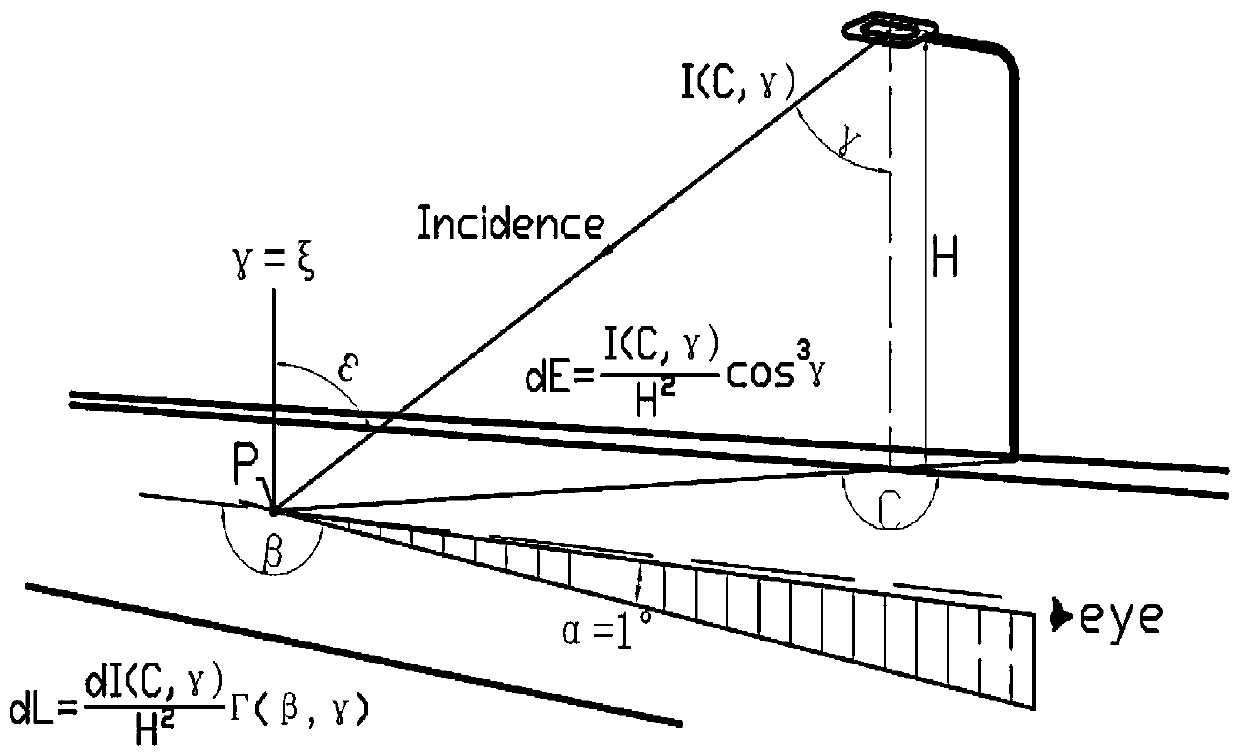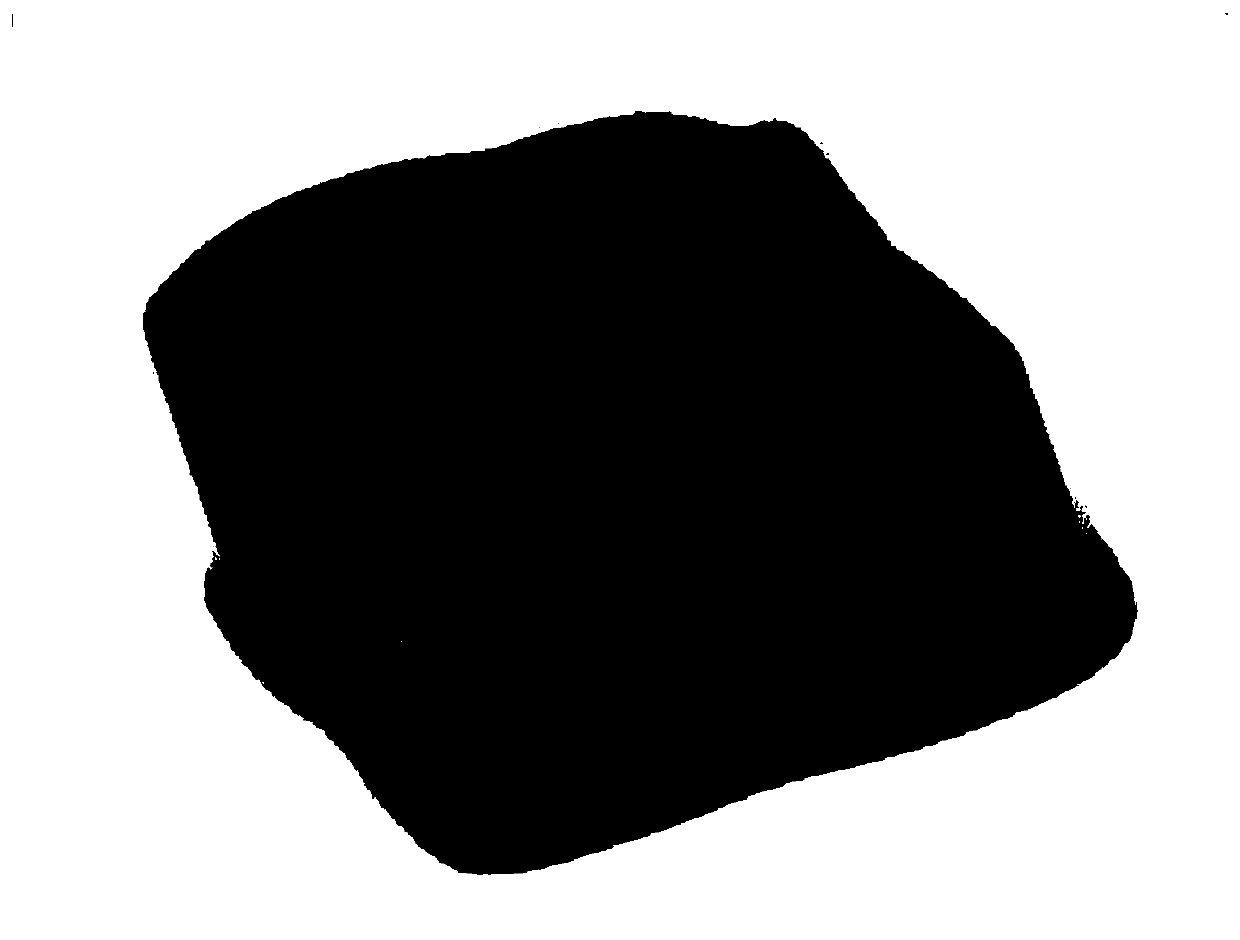A Secondary Light Distribution Method Based on Brightness
A technology of secondary light distribution and brightness, applied in the direction of light source, components of lighting devices, semiconductor devices of light-emitting elements, etc., can solve the problem of neglecting brightness measurement, and achieve the effect of brightness uniformity and no glare
- Summary
- Abstract
- Description
- Claims
- Application Information
AI Technical Summary
Problems solved by technology
Method used
Image
Examples
Embodiment Construction
[0025] A secondary light distribution method based on brightness in the present invention comprises the following steps:
[0026] Step 1. Establish a mathematical model according to road lighting requirements (such as figure 2 ), to find the light intensity distribution in the image space:
[0027] CIE144-2001 proposes a reflection coefficient table Γ(β, Tanγ) for different road surfaces, which is used to represent the reflection performance of the road surface.
[0028] CIE144 defines luminance coefficient q(β, γ)=dL(β, γ) / dE(β, γ) ⑴ that is, the luminance coefficient is the ratio of the luminance of the measured point on the road surface to the illuminance of the point (see figure 2 );
[0029] The relationship between the brightness coefficient q(β, γ) and the reflection coefficient table Γ(β, Tanγ) is:
[0030] Γ(β,γ)=q(β,γ)*COS 3 gamma (2)
[0031] According to the national standard CJJ45-2006, the uniformity of illumination brightness of the corresponding road U ...
PUM
 Login to View More
Login to View More Abstract
Description
Claims
Application Information
 Login to View More
Login to View More - R&D
- Intellectual Property
- Life Sciences
- Materials
- Tech Scout
- Unparalleled Data Quality
- Higher Quality Content
- 60% Fewer Hallucinations
Browse by: Latest US Patents, China's latest patents, Technical Efficacy Thesaurus, Application Domain, Technology Topic, Popular Technical Reports.
© 2025 PatSnap. All rights reserved.Legal|Privacy policy|Modern Slavery Act Transparency Statement|Sitemap|About US| Contact US: help@patsnap.com



